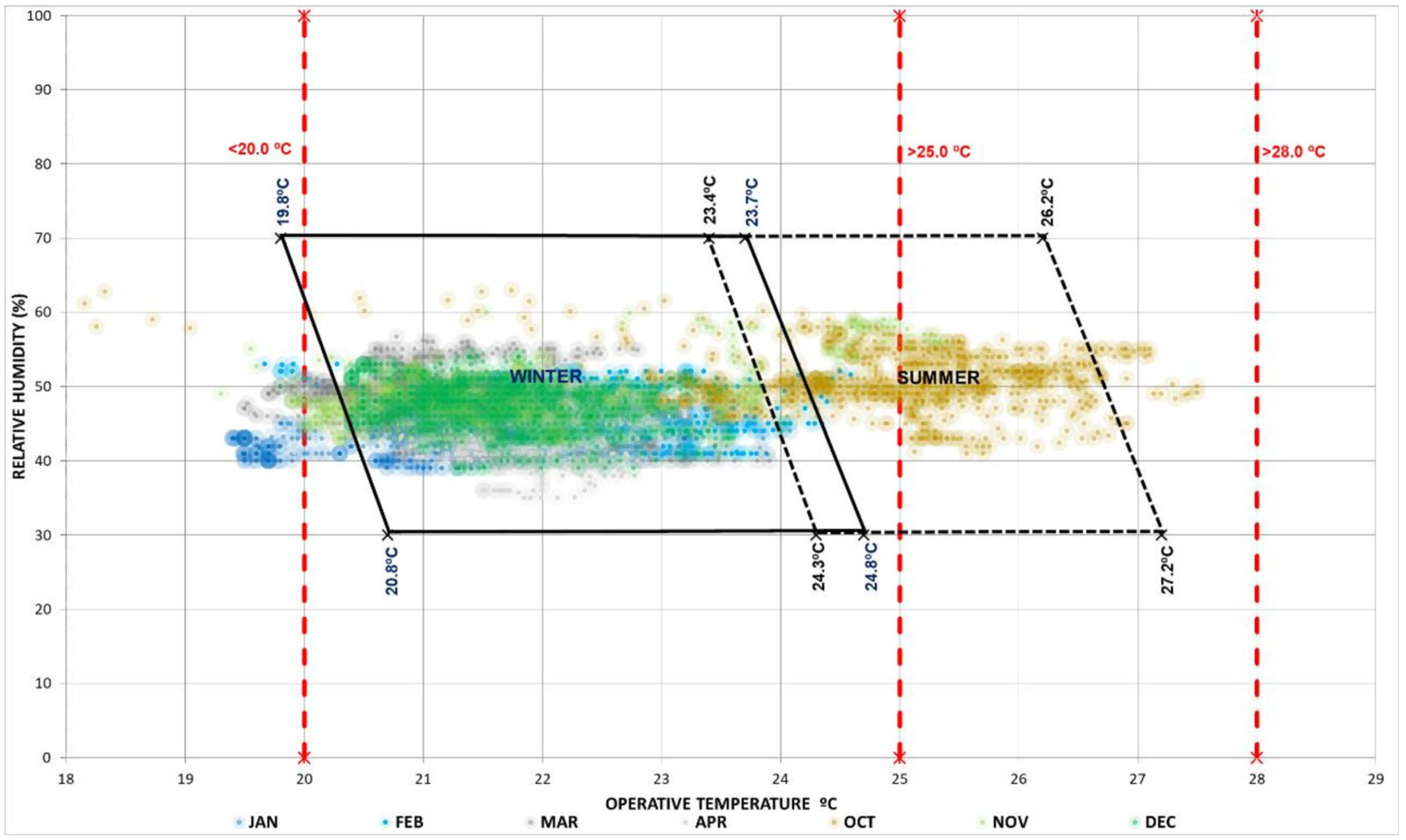

Section 6 of this standard covers design parameters, that include specifications for the thermal environment, indoor air quality (or ventilation rates), humidity, lighting, and noise. Design Input Parameters of Buildings and Sizing of Heating, Cooling, Ventilation, and Lighting Systems Process of removing water vapor from the air. Process of adding water vapor to the air to increase humidity. This is a similar, but slightly more concise, term you can also find in the ASHRAE 55 and ISO 7730 standards previously mentioned. The uniform temperature of an imaginary black enclosure in which an occupant would exchange the same amount of heat by radiation and convection as in the non-uniform room. Indoor air quality, as noted in the ‘categories of indoor environmental quality’ table shown above. The PPD is calculated from the PMV, as it can be found from the distribution of individual thermal sensation votes compiled collectively (as shown above). Seven-point thermal sensation scale PPDĪn index that builds a quantitative prediction of the percentage of thermally dissatisfied inhabitants (i.e., too warm or too cold). Our computation method will be addressed in the latter part of this article. Different methods can be used to assess this for different combinations of metabolic rate, clothing insulation, temperature, airspeed, mean radiant temperature, and relative humidity. Thermal neutrality is obtained when an occupant’s internal heat production is the same as its heat loss.

Important Terminology PMVĪn index cited in other standards like ASHRAE 55 that predicts the mean value of votes of a group of occupants on a seven-point thermal sensation scale (shown below). A higher level of expectation may be necessary if the building houses occupants with special requirements (children, elderly, occupants with disabilities, etc.).

This table indicates indoor environment expectations, where ‘medium’ is a normal level. Categories of indoor environmental quality in EN 16798 These are employed as bases for defining the input for heating load calculations, cooling load calculations, equipment sizing, and determining the energy balance of a building. The thermal criteria used within EN 16798 are based on the predefined PMV and PPD calculations found in the ASHRAE 55 and ISO 7730 standards. In terms of regulatory compliance, the annex allows for national or regional requirements to be inputted. The energy performance of building standards ( EPB) are meant for users that fall into the categories of architects, engineers or regulators. This new standard also takes into consideration the occupational expectation difference between persons in a naturally or mechanically ventilated space, as well as a year-round evaluation of the indoor thermal environment. This report is the newer version of the widely accredited EN 15251 standard published in 2007, but splits the standards into two parts (normative part 1 and technical part 2), as well as includes a new section within the annex that takes into consideration daylight factors and assumed occupant schedules. The scope of EN 16798 covers specific requirements for indoor environmental parameters, including indoor air quality, acoustics, and lighting in regards to building design. Scope, Target Audience, and Interaction with Other International Standards Scope In this article, we will explore how this standard interacts with other civil engineering and HVAC related standards like ASHRAE 55 and ISO 7730, new key terminology, and design parameters for building design and energy efficiency. The overall aim is to harmonize the methodology for the evaluation of the energy performance of buildings internationally, under a mandate given to CEN by the European Commission, called ‘recast EPBD’ standards or just EPB standards. It is a European standard covering both residential and non-residential structures.
#DESCARGAR NORMA UNE ISO 7730 UPDATE#
EN 16789-1 is the 2019 update of the BS EN 15251:2007 standard, covering indoor environmental criteria for the design of buildings, room conditioning systems, and lighting systems alike.


 0 kommentar(er)
0 kommentar(er)
